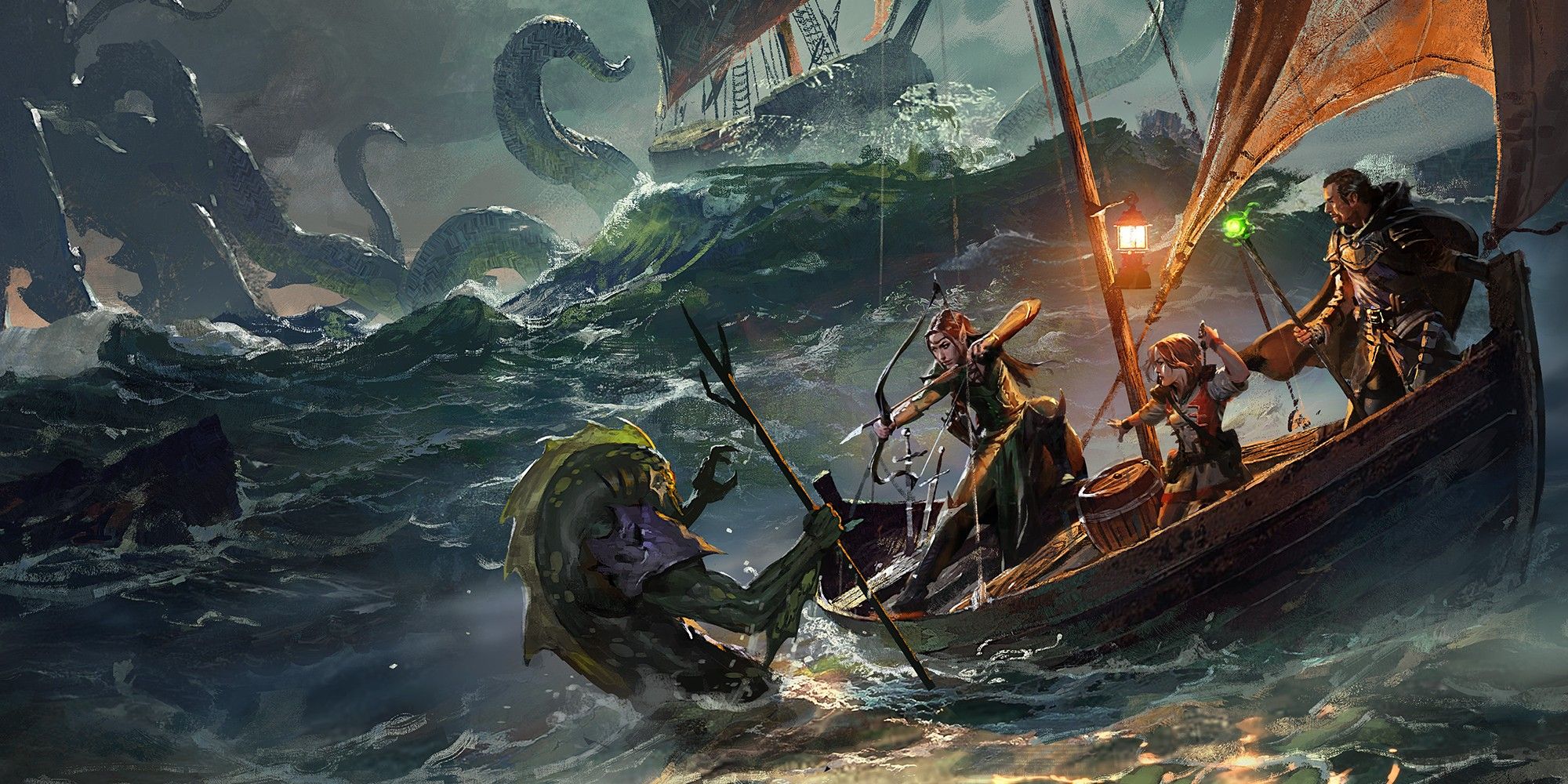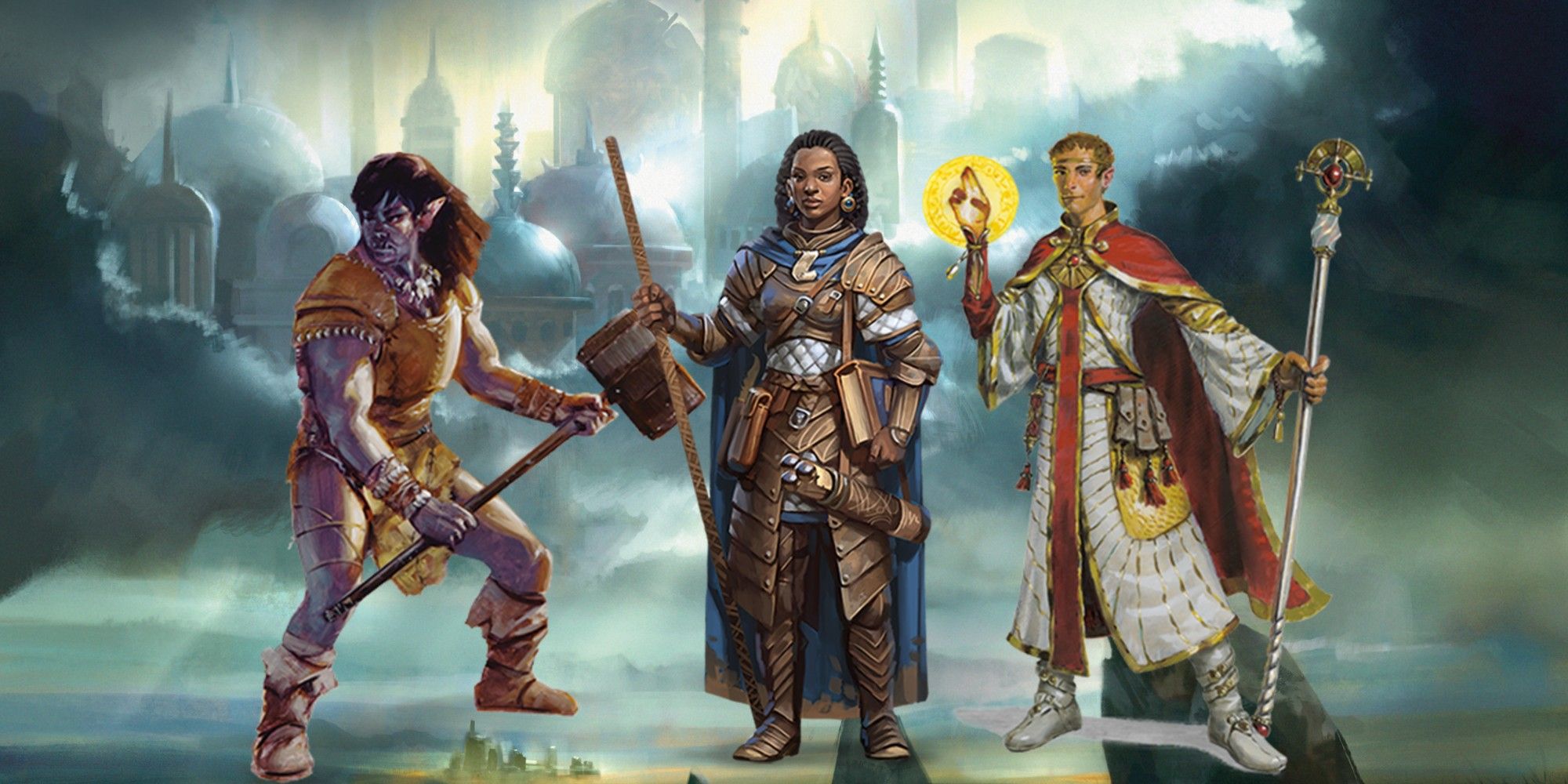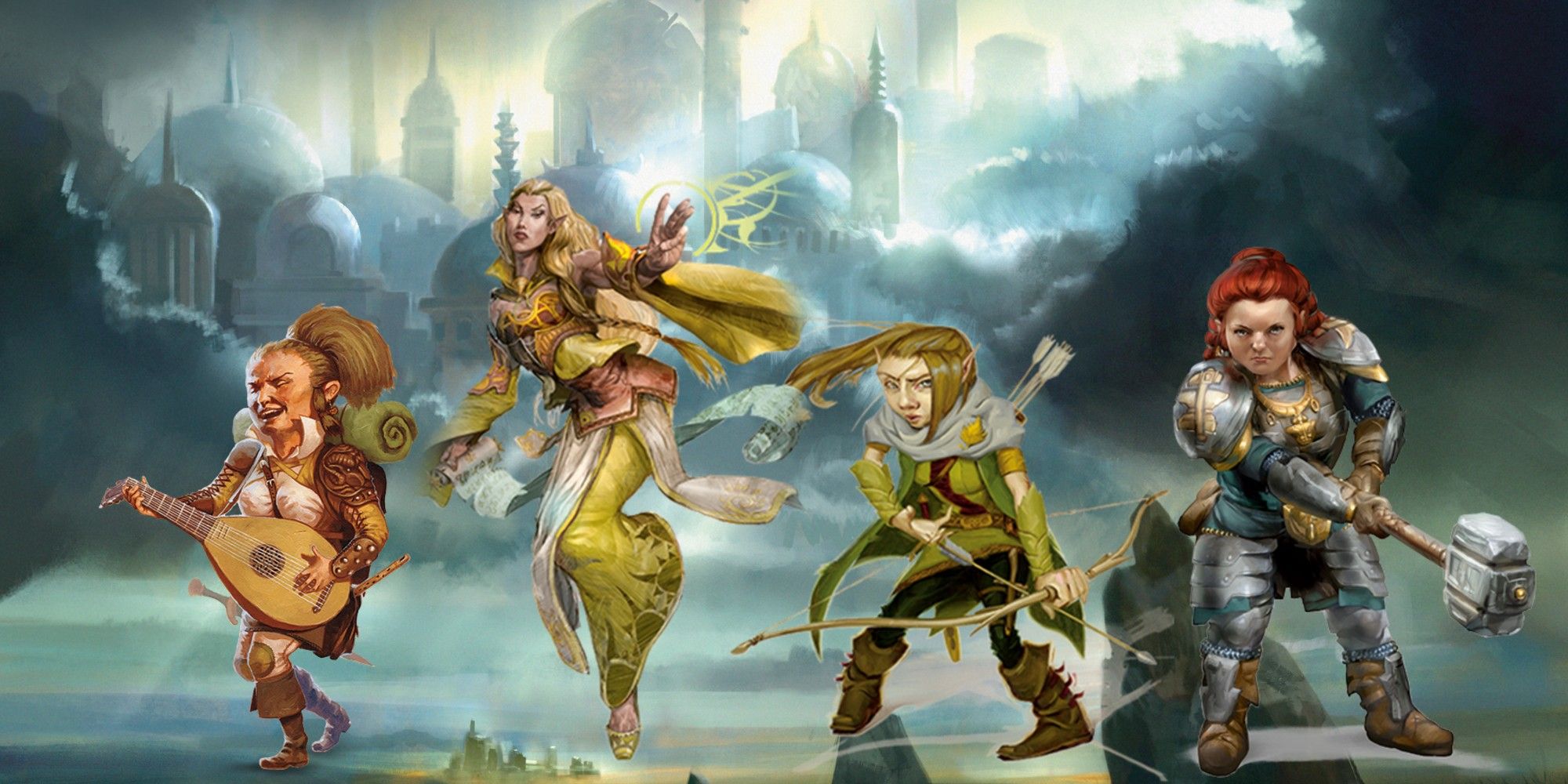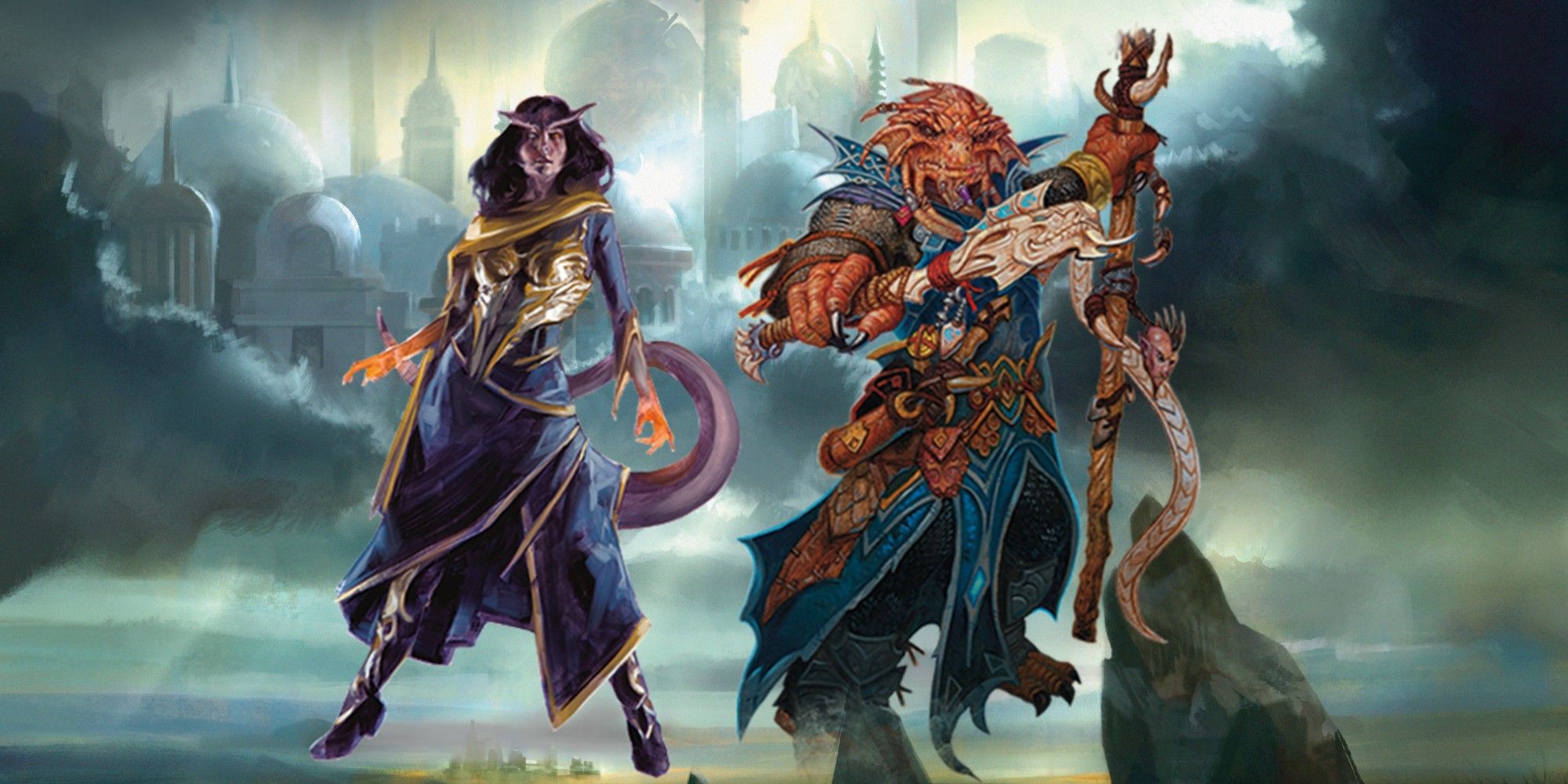When starting a game of Dungeons & Dragons, character creation is a critical part of the process. After all, most of the gameplay in the tabletop RPG is role-playing. Players need to make sure their character is built to function based on how they want to engage with the world. Character builds usually require players to choose a class and a background, but before they do, they usually select a race.
Dungeons & Dragons is a fantasy world at heart, something reflected in the diverse races of species in its stories. An important distinction is the difference between races and monsters, as players will engage with beings such as goblins but cannot choose to be a member of that race. In the 5e Player's Handbook, there are nine playable races to choose from, and it's important to consider all ramifications that come with each race.
What race a Dungeons & Dragons character is factors into gameplay quite a bit. For one, each race brings a unique set of traits that can prove useful, such as darkvision, which allows players to see up to 60 feet in darkness. Certain races are also more suited to different classes than others. For example, if a player is contemplating being a barbarian, a halfling may not be the best choice, since barbarians rely so much on strength. A character's race also influences how they engage with the world, and how the world treats them, as a half-orc is much less likely to get a warm welcome at a tavern than an elf.
Dungeons & Dragons' Human & Half-Human Races
Humans are probably the easiest race to understand. They bear many similarities with their real-world counterparts, from life span to build to diversity in race and talents. There are nine subraces for humans in the Dungeons & Dragons multiverse, more than any other race, but they provide backstory only, no additional skills or ability increases. They are highly adaptable to any class, and their morals, tastes, and behaviors vary wildly, making them an easy choice for new players. Because of this versatility, players who choose to be human can increase each of their abilities by one point.
Half-elves are typically half-human as well, though ambitious Dungeons & Dragons players can work with DMs to craft a mix between an elf and another race. Like their human parentage, half-elves are versatile, able to adapt to most classes a player would choose. However, their natural charm endears them to backgrounds of wanderers, diplomats, or swindlers. Players who choose the half-elf race improve their charisma and two other abilities of their choice, as well as gain darkvision, fey ancestry, and a knack for languages.
Half-orcs have one orcish parent and one human. Unsurprisingly, they are not typically welcome in society and tend to cluster in their own communities. Half-orcs carry a penchant for rage, making them a perfect fit with the barbarian class in Dungeons & Dragons. However, this could also make them tenuous party members, something to consider when selecting a race. Players who select half-orc gain strength and constitution ability increases, darkvision and savage attacks.
Dungeons & Dragons' Classic Fantasy Races
Like most of their bretheren in other fantasy works, Dwarves are hardy creatures, short in stature but strong in spirit. They are excellent blacksmiths in Dungeons & Dragons, and many do excel in mining or crafting weapons. Dwarves are extremely slow to trust, so players hoping to be immediately friendly with their party should look elsewhere. Dwarves are a good choice for fighting classes, as they increase a player's constitution, have proficiency in combat and have darkvision.
Elves in Dungeons & Dragons are best described as lofty and prideful. There are three subraces of elves: high elf, wood elf and dark elf, each with their own unique culture and traits for players to engage with. Regardless of subrace, all players who choose to be an elf can increase their dexterity, as well as gain darkvision, increased perception and fey ancestry. Elves also come with a neat meditation trick that allows them to get the full benefits of a long rest in the time of a short rest, very handy on a long expedition or after a tough battle.
Gnomes are chaotic creatures, a race focused on learning and invention. They also tend to be good-natured, making them a pleasant addition to any party and well-suited for players who want to befriend most characters they encounter. Their quest for knowledge and love of tinkering is an ideal match with the wizard class, but gnomes would make excellent bards as well. All gnomes gain intelligence proficiency, darkvision and gnome cunning, but the subraces deep gnome, forest gnome and rock gnome each come with additional unique abilities endemic to their background.
Halflings, similar to their Lord of the Rings inspirations, enjoy a peaceful life and a full belly, with a strong dislike of combat and danger. Like the gnomes, Dungeons & Dragons halflings are friendly creatures and would be a strong choice for players hoping to be a friendly addition to the party and engage with NPCs during the quest. Players who select the halfling race gain dexterity increase and halfling nimbleness, as well as luck. Halflings also have three subraces - Lightfoot, Lotusden and Stout - each increasing a different ability and giving players another skill or cantrip.
Dungeons & Dragons' Mystical Races
Dragonborn are descended from dragons, and unsurprisingly, they look like dragons in humanoid form, albeit without wings or a tail. Players who choose this race should not expect a warm welcome at the local tavern or shop, though despite society's fear of them, dragonborn tend to be well-behaved. Additionally, dragonborn in Dungeons & Dragons get increased strength and charisma abilities, as well as draconic ancestry, making this an ideal race for a player who wants to be a fighting class. Additionally, Dragonborn characters have "breath weapon," which ranges from acid to cold damage, making it a formidable attack.
As with the dragonborn, Tieflings are typically met with hostility in society. They are descendants of Asmodeus, the overlord of the Nine Hells, and as such bear devilish features: horns protruding from foreheads and tails proudly jutting out. Because of their demon heritage, tieflings tend to veer toward evil alignments in Dungeons & Dragons, the only race to naturally do so. This could make it tricky, especially for new players, to have a tiefling in a party on a noble quest. Players who want to be a rogue would do well to choose the tiefling race, bringing intelligence, darkvision, and an infernal legacy to their Dungeons & Dragons campaign.




